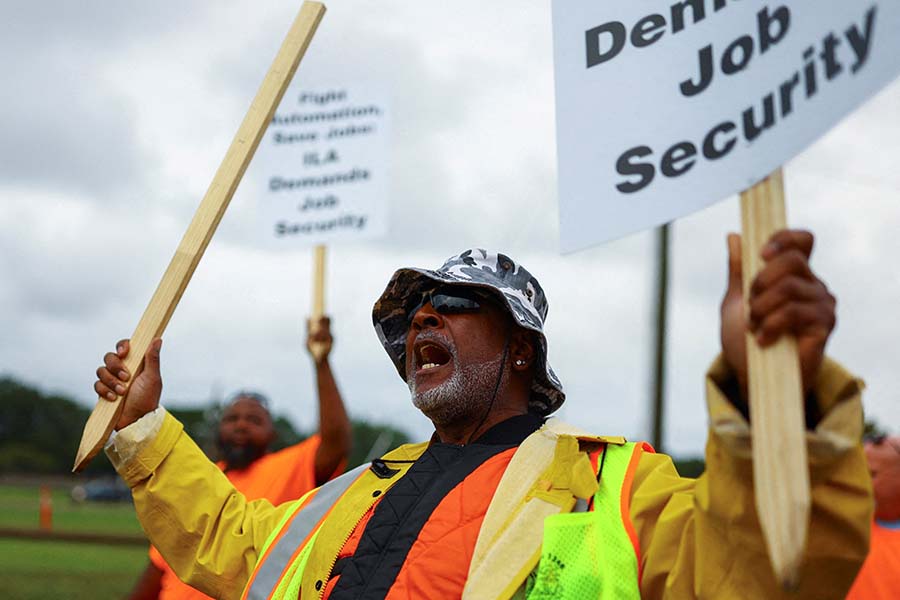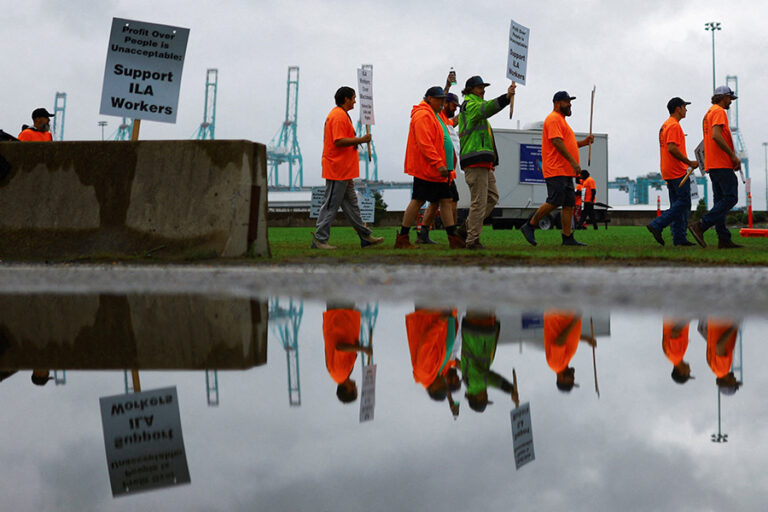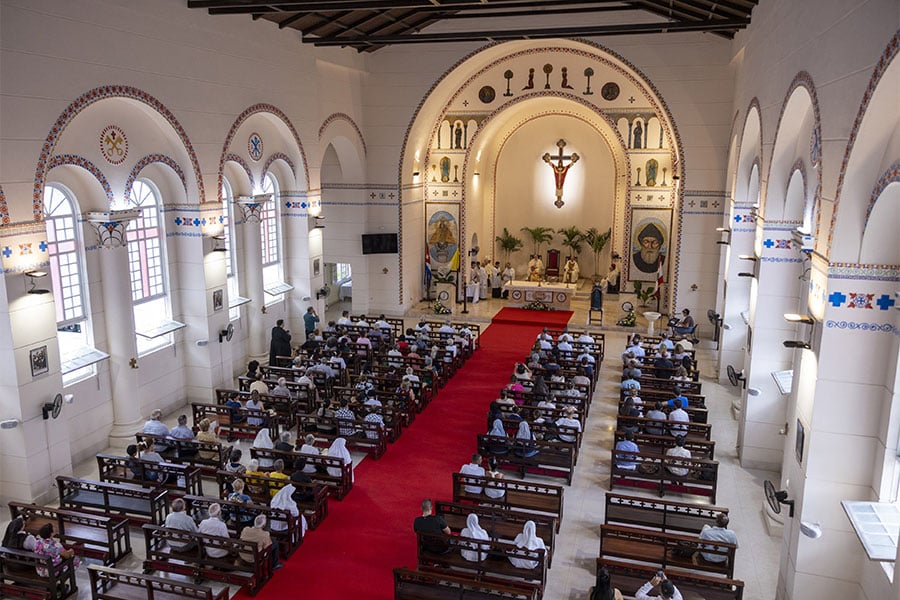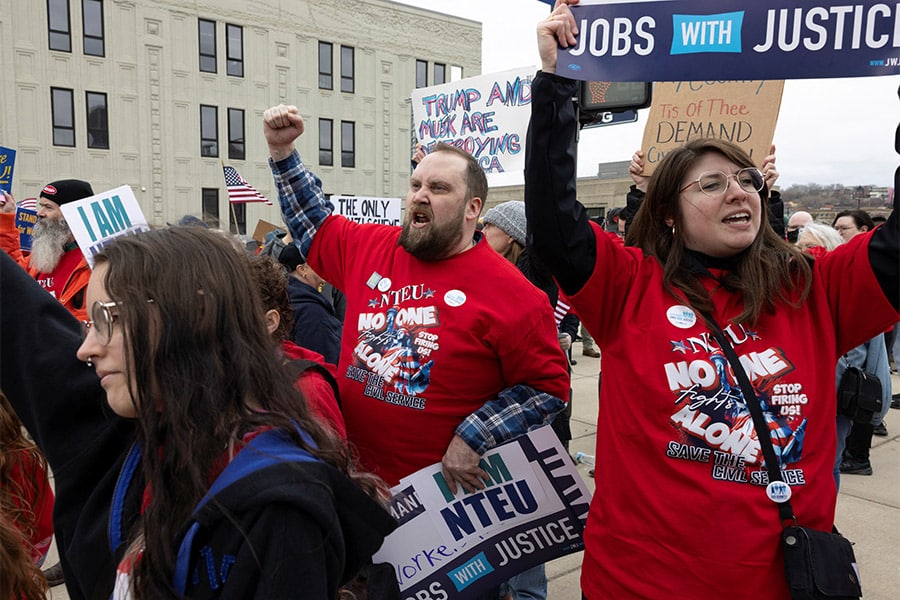Some labor strikes can be comfortably ignored by many Americans.
But when an estimated 45,000 dockworkers at 36 East and Gulf Coast ports walked off the job at 12:01 a.m. ET on Oct. 1 — for the first time in nearly 50 years — a sort of collective, nationwide anxiety was almost palpable. Newscaster predictions of widespread economic and consumer disruptions — in advance of both the Nov. 5 U.S. elections and the holiday shopping season — did little to defuse rising American angst.
Fortunately, a compromise was reached Oct. 3 between the International Longshoremen’s Association, or ILA, and the U.S. Maritime Alliance, USMX, and under a tentative agreement on wages — a 61.5 percent increase over six years — workers returned to the ports until Jan. 15, 2025, after which the ILA will resume negotiation of “all other outstanding issues.”
ILA members load and unload cargo from vessels in ports, harbors, and docks, including Baltimore, while the USMX represents ocean cargo carriers and terminal operators.
But why did a three-day strike have such a potentially consequential impact?

Supply chain disruption is the critical factor.
According to the National Association of Manufacturers, nearly 70 percent of U.S. exports and 56 percent of containerized U.S. imports pass through East and Gulf Coast ports.
“Maritime commerce is really important,” said Daniel Kling, an assistant professor of finance and business at Belmont Abbey College in Belmont, North Carolina. “If you can’t do trade, that shuts things down.”
Analysts and business groups estimated the possible daily economic impact between hundreds of millions of dollars to $5 billion dollars. Pharmaceuticals, electronics, seafood, fruits and vegetables, wood products, autos, apparel and more could have been impacted, and shortages and price hikes were looming.
Talks between the ILA and USMX broke down months ago over issues such as wages, pensions, and health care, as well as the automation of work. A six-year-old labor agreement eventually expired after a master contract agreement — covering six of the 10 busiest ports in America — failed to be reached.
“It seems like the biggest irreconcilable difference is the language on automation,” Kling commented. “U.S. ports are already kind of inefficient. Make the machines lift the really heavy stuff. Going from specialized merchant ships to container ships is a huge boon for the world,” he suggested, “and the future of trade and globalization. Making trade easier is good.”
Typically, human dockworkers unload containers and transfer pallets of goods into warehouses — but recent robotic developments have heralded the approach of an automated future. Relatedly, longshoremen receive “container royalties” — supplemental compensation — since the rise in containerized shipping has reduced employment opportunities.
Both Democratic presidential nominee and Vice President Kamala Harris and Republican presidential nominee and former President Donald Trump defended ILA workers.
“Foreign-owned shipping companies have made record profits and executive compensation has grown,” Harris said in a statement. “The longshoremen, who play a vital role transporting essential goods across America, deserve a fair share of these record profits.”
According to Transport Topics, an influential freight transportation news source, “The global container shipping industry saw profits surge to more than $10 billion in the second quarter on record volumes and rising freight rates.”
“American workers should be able to negotiate for better wages,” said Trump, “especially since the shipping companies are mostly foreign flag vessels.”
Foreign companies both own and operate approximately 80 percent of U.S. ports.
Clayton Sinyai — executive director of the Catholic Labor Network — noted that the workers who struck “have demanding jobs, staffing our ports 24 hours a day on-call to unload the goods Americans need and want. Because they have worked together under the banner of the union for decades, the port has become a source of good jobs at good wages and benefits for tens of thousands.”
The Catholic Church has an extensive history of teaching and actions that support the rights of workers, and both popes and prelates have spoken directly to the issue of unions and strikes.
Archbishop Borys A. Gudziak of the Ukrainian Archeparchy of Philadelphia said in a 2024 Labor Day Statement released Sept. 2 by the U.S. Conference of Catholic Bishops that, “union representation has diminished, especially in the private sector, leaving workers with less protection and a weakened bargaining position.” The archbishop, chairman of the USCCB’s domestic policy committee, issued the statement jointly with Bishop Mark J. Seitz of El Paso, Texas, the USCCB’s migration committee chairman.
Indeed, the percentage of unionized American wage and salary workers was only 10.0 percent in 2023 — little changed from the previous year — the Bureau of Labor Statistics of the U.S. Department of Labor reported in January.
The USCCB’s 1986 pastoral letter “Economic Justice for All” teaches, “Unions may also legitimately resort to strikes where this is the only available means to the justice owed workers.”
St. John Paul II stated in his 1981 encyclical “Laborem Exercens” that strikes are “recognized by Catholic social teaching as legitimate in the proper conditions and within just limits. … Workers should be assured the right to strike, without being subjected to personal penal sanctions for taking part in a strike.”
Daniel Graff — director of the Higgins labor program at the University of Notre Dame in Indiana — noted that consumer complacency cast the ILA strike in sharp relief.
“Americans as consumers just got so accustomed to — over the last 30, 40 years — not having any disruptions to the daily routine of being able to get what you want, when you want, at a price you’re used to,” he observed.
While the coronavirus pandemic disrupted supply chains worldwide, the experience was largely unfamiliar to modern Americans, said Graff.
Americans, he added, have also become comfortable with infrequent strikes compared to the post-World War II “golden age” of the American economy, when work stoppages were a consistent feature of the U.S. labor landscape.
“The historian in me thinks this should be a more regularized feature of the American economy,” suggested Graff, “So that we don’t get so spoiled as consumers — and realize the importance of some of these labor issues that, as consumers, we don’t have to think about a lot.”
“Port strikes are rare,” observed Joseph McCartin, executive director of the Kalmanovitz Initiative for Labor and the Working Poor at Georgetown University. “but when they do occur they can be quite consequential. This is more true today, I think, than it was 50 years ago because supply chains are far more global and operate with less slack in them than they did the last time the ILA staged a walkout of this size,” he said.
The Biden administration declined to intercede, in contrast to December 2022, when President Joe Biden signed legislation to block a national U.S. railroad strike.
“While the Taft-Hartley Act of 1947 gives president’s the power to intervene in strikes like this that might affect the national economy, doing so tends to undermine union bargaining power,” explained McCartin. “For a president that proudly touts his pro-worker pro-union record it would have been a mistake to undercut workers coming out of the gate,” he added, referring to Biden.
The timing of the strike was also an essential factor.
“That this walkout occurred in the midst of a tight presidential election and at a time when the labor movement is beginning to feel its oats after years of retreat,” McCartin observed, “made this walkout all the more important for both the country and the union movement.”
Read More Social Justice
Copyright © 2024 OSV News








